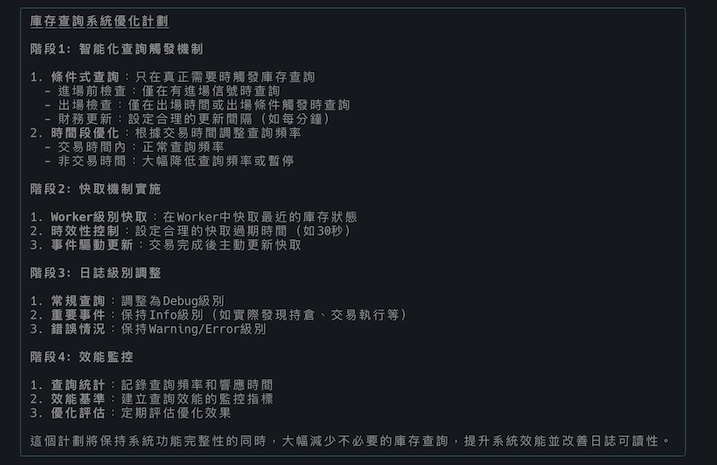The Technical Threshold Trap of Vibe Coding: When Feeling Meets Reality
The Technical Threshold Trap of Vibe Coding: When Feeling Meets Reality
In recent years, “Vibe Coding” has become a hot topic in the development community, with many developers attracted to its free and intuitive programming approach. However, as a senior technical architect, I must point out a key issue that most people overlook: Vibe Coding actually has an extremely high technical threshold.

Danger Signs When Technical Skills Are Insufficient
The Trap of AI “Standard Answers”
When developers lack sufficient technical foundation, they often rely on AI tools for solutions. The problem is that AI usually provides “seemingly correct” general practices:
// Typical AI suggestion: seemingly reasonable CRUD operations
class UserService {
async createUser(userData) {
const user = new User(userData);
await user.save();
return user;
}
async getUser(id) {
return await User.findById(id);
}
async updateUser(id, userData) {
return await User.findByIdAndUpdate(id, userData);
}
}
Such code “works,” but from an architectural perspective, it has numerous problems:
- Lack of input validation
- No error handling
- Cannot handle concurrency issues
- Lack of transaction management
- No consideration for caching strategies
The Reality of “Works But Terrible”
In Vibe Coding practice, developers with insufficient technical foundation tend to produce the following problems:
1. Short-sighted Architectural Design
// Short-sighted design: handling business logic directly in controller
export class OrderController {
async createOrder(req: Request, res: Response) {
// All logic written here
const { items, userId } = req.body;
// Calculate price
let total = 0;
for (const item of items) {
const product = await Product.findById(item.productId);
total += product.price * item.quantity;
}
// Check inventory
for (const item of items) {
const product = await Product.findById(item.productId);
if (product.stock < item.quantity) {
return res.status(400).json({ error: 'Insufficient stock' });
}
}
// Create order
const order = new Order({ items, userId, total });
await order.save();
res.json(order);
}
}
2. Ignoring Performance Issues
The above code has serious N+1 query problems, but “feels” fine during early development until data volume increases and exposes the issues.
3. Absence of Error Handling
// Dangerous Vibe Coding: ignoring error handling
const processPayment = async (orderData) => {
const payment = await paymentGateway.charge(orderData);
const order = await createOrder(orderData);
const notification = await sendNotification(order);
return { payment, order, notification };
};
Technical Leader-Level Vibe Coding
True excellent Vibe Coding requires deep technical foundation as support:
Architect-Level Intuition
An experienced architect doing Vibe Coding will instinctively consider:
// Architect's Vibe Coding: clear structure and scalability
interface OrderDomainService {
validateOrder(orderData: OrderInput): Promise<ValidationResult>;
calculatePricing(items: OrderItem[]): Promise<PricingResult>;
reserveInventory(items: OrderItem[]): Promise<ReservationResult>;
processPayment(paymentData: PaymentInput): Promise<PaymentResult>;
}
class OrderOrchestrator {
constructor(
private orderService: OrderDomainService,
private eventBus: EventBus,
private logger: Logger
) {}
async createOrder(orderData: OrderInput): Promise<Result<Order, OrderError>> {
return await this.executeWithRetry(async () => {
const validation = await this.orderService.validateOrder(orderData);
if (!validation.isValid) {
return Err(new ValidationError(validation.errors));
}
const pricing = await this.orderService.calculatePricing(orderData.items);
const reservation = await this.orderService.reserveInventory(orderData.items);
// Use Saga Pattern to ensure consistency
const saga = new OrderCreationSaga(orderData, pricing, reservation);
const result = await saga.execute();
if (result.isSuccess) {
await this.eventBus.publish(new OrderCreatedEvent(result.order));
}
return result;
});
}
}
System Thinking of Technical Leaders
Excellent technical leaders naturally consider when doing Vibe Coding:
- Observability: Logging, monitoring, tracing
- Reliability: Error recovery, retry mechanisms, circuit breakers
- Scalability: Horizontal scaling, distributed architecture
- Security: Input validation, authorization, encryption
- Maintainability: Clear abstractions, documentation, testing
How to Cultivate High-Level Vibe Coding Abilities
1. Deepen Technical Foundation
- Design Patterns: Master common design pattern application scenarios
- Distributed Systems: Understand CAP theorem, consistency models, distributed locks
- Performance Tuning: Master performance analysis tools and optimization strategies
- Database Design: Normalization, indexing strategies, query optimization
2. Build Architectural Thinking
// Good architects consider layering and dependency injection
interface PaymentGateway {
charge(amount: Money, paymentMethod: PaymentMethod): Promise<PaymentResult>;
}
interface NotificationService {
send(notification: Notification): Promise<void>;
}
interface OrderRepository {
save(order: Order): Promise<void>;
findById(id: OrderId): Promise<Option<Order>>;
}
// Dependency injection and inversion of control
class OrderService {
constructor(
private paymentGateway: PaymentGateway,
private notificationService: NotificationService,
private orderRepository: OrderRepository,
private eventBus: EventBus
) {}
}
3. Accumulate Practical Experience
- Participate in large system design and refactoring
- Handle high concurrency, large data volume scenarios
- Solve production environment performance issues
- Lead teams to complete complex projects
Conclusion: Technical Depth Determines Vibe Height
Vibe Coding is not arbitrary programming, but intuitive development built on deep technical foundation. When your technical level reaches architect or technical leader level, your “feeling” is actually the crystallization of years of experience and deep thinking.
True Vibe Coding is an advanced technical art that requires developers to have:
- Deep technical foundation
- Rich practical experience
- Systematic architectural thinking
- Commitment to quality
If you’re still on the path of technical growth, I recommend first solidifying your foundation, learning best practices, and accumulating experience. When your technical intuition is sharp enough, you can naturally perform high-quality Vibe Coding.
Otherwise, what you get might just be “works but terrible” code.